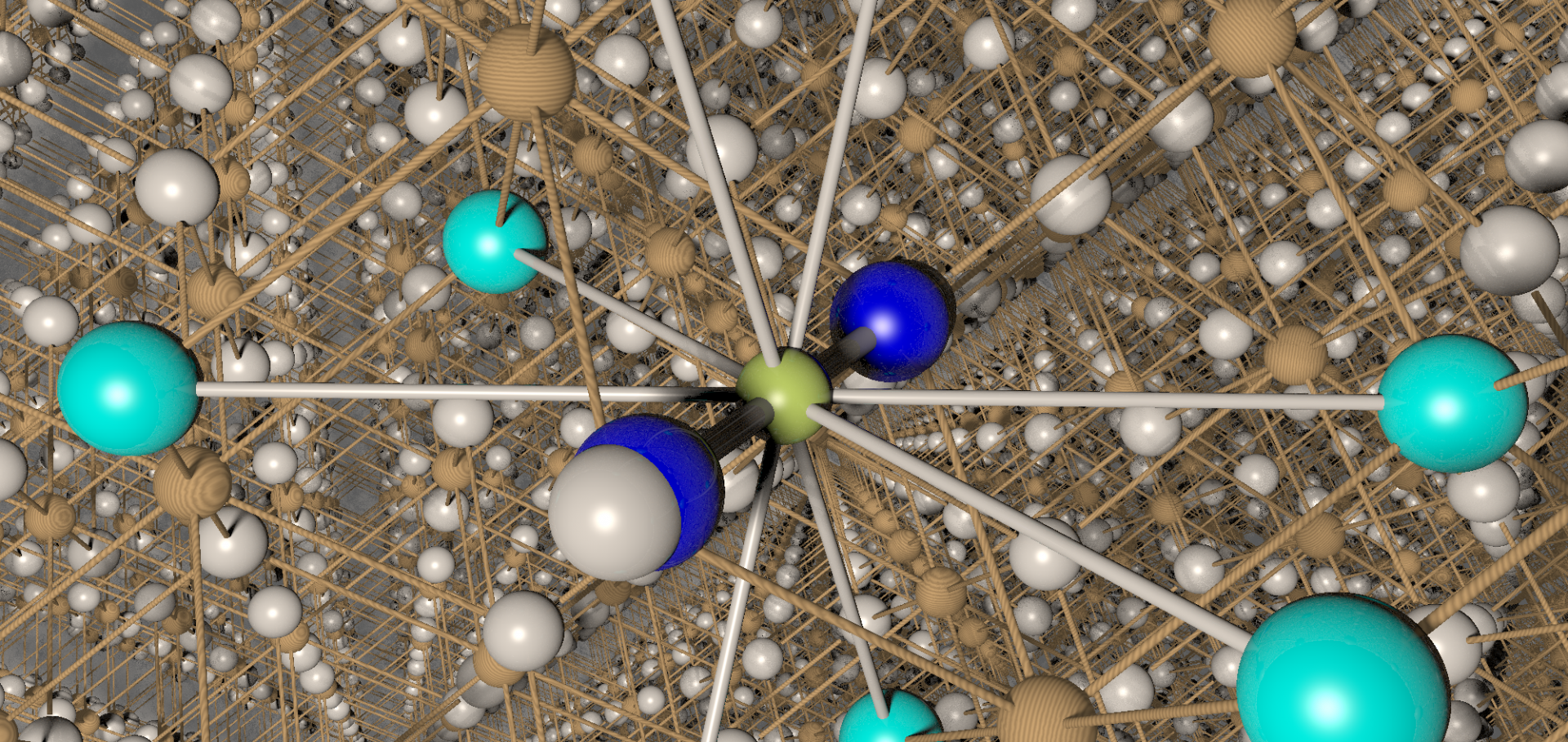Spin freezing and dynamics in Ca3 Co2-x Mnx O6 (0.95) investigated with implanted muons: Disorder in the anisotropic next-nearest-neighbor Ising model
Physical Review B - Condensed Matter and Materials Physics 80:2 (2009)
Abstract:
We present a muon-spin relaxation investigation of the Ising chain magnet Ca3 Co2-x Mnx O6 (0.95). We find dynamic spin fluctuations persisting down to the lowest measured temperature of 1.6 K. The previously observed transition at around 18K is interpreted as a subtle change in dynamics for a minority of the spins coupling to the muon that we interpret as spins locking into clusters. The dynamics of this spin fraction freeze below a temperature TSF.Spin freezing and dynamics in Ca_{3}Co_{2-x}Mn_{x}O_{6} (x ~ 0.95) investigated with implanted muons: disorder in the anisotropic next-nearest neighbor Ising model
(2009)
ChemInform Abstract: Structure, Antiferromagnetism and Superconductivity of the Layered Iron Arsenide NaFeAs.
ChemInform Wiley 40:27 (2009) no-no
Strong H...F hydrogen bonds as synthons in polymeric quantum magnets: structural, magnetic, and theoretical characterization of [Cu(HF2)(pyrazine)2]SbF6, [Cu2F(HF)(HF2)(pyrazine)4](SbF6)2, and [CuAg(H3F4)(pyrazine)5](SbF6)2.
J Am Chem Soc 131:19 (2009) 6733-6747
Abstract:
Three Cu(2+)-containing coordination polymers were synthesized and characterized by experimental (X-ray diffraction, magnetic susceptibility, pulsed-field magnetization, heat capacity, and muon-spin relaxation) and electronic structure studies (quantum Monte Carlo simulations and density functional theory calculations). [Cu(HF(2))(pyz)(2)]SbF(6) (pyz = pyrazine) (1a), [Cu(2)F(HF)(HF(2))(pyz)(4)](SbF(6))(2) (1b), and [CuAg(H(3)F(4))(pyz)(5)](SbF(6))(2) (2) crystallize in either tetragonal or orthorhombic space groups; their structures consist of 2D square layers of [M(pyz)(2)](n+) that are linked in the third dimension by either HF(2)(-) (1a and 1b) or H(3)F(4)(-) (2). The resulting 3D frameworks contain charge-balancing SbF(6)(-) anions in every void. Compound 1b is a defective polymorph of 1a, with the difference being that 50% of the HF(2)(-) links are broken in the former, which leads to a cooperative Jahn-Teller distortion and d(x(2))(-y(2)) orbital ordering. Magnetic data for 1a and 1b reveal broad maxima in chi at 12.5 and 2.6 K and long-range magnetic order below 4.3 and 1.7 K, respectively, while 2 displays negligible spin interactions owing to long and disrupted superexchange pathways. The isothermal magnetization, M(B), for 1a and 1b measured at 0.5 K reveals contrasting behaviors: 1a exhibits a concave shape as B increases to a saturation field, B(c), of 37.6 T, whereas 1b presents an unusual two-step saturation in which M(B) is convex until it reaches a step near 10.8 T and then becomes concave until saturation is reached at 15.8 T. The step occurs at two-thirds of M(sat), suggesting the presence of a ferrimagnetic structure. Compound 2 shows unusual hysteresis in M(B) at low temperature, although chi vs T does not reveal the presence of a magnetic phase transition. Quantum Monte Carlo simulations based on an anisotropic cubic lattice were applied to the magnetic data of 1a to afford g = 2.14, J = -13.4 K (Cu-pyz-Cu), and J(perpendicular) = -0.20 K (Cu-F...H...F-Cu), while chi vs T for 1b could be well reproduced by a spin-1/2 Heisenberg uniform chain model for g = 2.127(1), J(1) = -3.81(1), and zJ(2) = -0.48(1) K, where J(1) and J(2) are the intra- and interchain exchange couplings, respectively, which considers the number of magnetic nearest-neighbors (z). The M(B) data for 1b could not be satisfactorily explained by the chain model, suggesting a more complex magnetic structure in the ordered state and the need for additional terms in the spin Hamiltonian. The observed variation in magnetic behaviors is driven by differences in the H...F hydrogen-bonding motifs.Superconductivity: A Very Short Introduction
Oxford University Press (OUP), 2009


